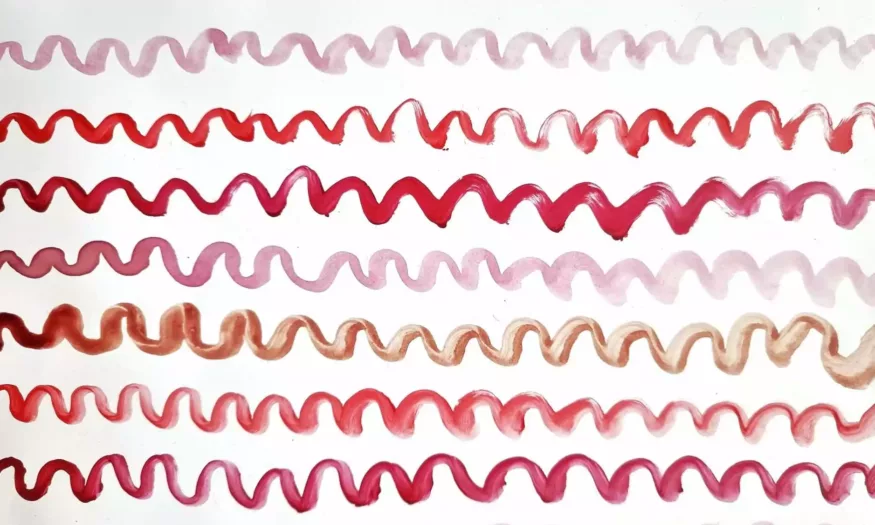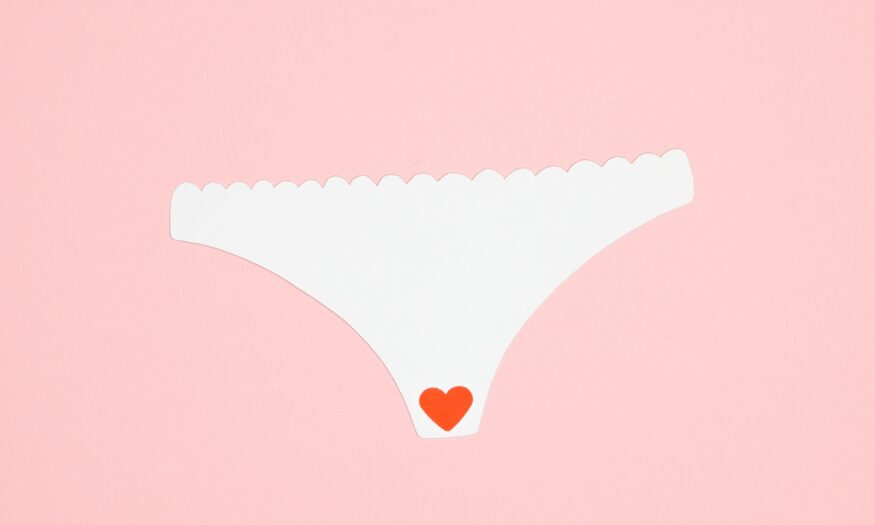Stages in the Menstrual Cycle
 Photo: Deon Black, LetsTalkSex
Photo: Deon Black, LetsTalkSex
At birth, ovaries contain about two million balls of cells. The immature egg in the center of each cell is called a follicle. The ovaries absorb more than half of these follicles during childhood. Of the 400,000 follicles still present at puberty, between 300 and 500 will eventually develop into mature eggs.
During the reproductive years, follicles develop throughout the cycle, but each month, under the influence of hormones, usually only one follicle develops fully. (Sometimes two or more follicles develop fully, in which case a twin or other multiple pregnancy can result.)
The follicle with the maturing egg inside moves toward the surface of the ovary. At ovulation, the follicle and the ovarian surface open, allowing the tiny egg to float out. About this time, you may feel a twinge or cramp in the lower abdomen or back (called mittelschmerz, German for “middle pain”).
I never knew the word ‘mittelschmerz’ until I was in nursing school. I thought it was such a cool word but was sure I wasn’t one of those women who actually experienced it. A year or so later I began tracking all of my fertility signs when I decided to try to get pregnant. I felt a funny cramp on my left side that was a familiar sensation but I had never put two and two together to recognize that it was my body ovulating. I actually exclaimed out loud, “Mittelschmerz!”
Headaches, stomach pains, or sluggishness are not uncommon at the time of ovulation. But you might also feel fantastic and not even know you are ovulating.
The Egg After Ovulation
After ovulation, the fingerlike ends (fimbria) of the nearby fallopian tube sweep the released egg into the tube’s funnel-shaped end. Each tube is lined with microscopic hair-like projections (cilia) that constantly move back and forth. As the egg begins its several-day journey to the uterus, wavelike movements of the muscles in the tube (peristalsis) and the movements of the cilia help it along.
If sperm enter the vagina, pass through the cervix, and travel through the uterus into the fallopian tubes, the cilia propel the sperm toward the egg. If the egg and sperm meet, they may join. (This is fertilization, when the sperm “fertilizes” the egg.) The fertilized egg then travels the rest of the way along the fallopian tube to the uterus.
Whether or not fertilization takes place, the empty follicle that just released the egg from the ovary becomes a corpus luteum (Latin for “yellow body” because of its color). The corpus luteum continues to make estrogen and also begins making progesterone.
If a fertilized egg implants into the uterus, it sends a signal to the ovary to keep making progesterone, which will help sustain a pregnancy by keeping the uterine lining thick and nourishing. If no pregnancy occurs, the corpus luteum is reabsorbed into the ovary after two weeks and the hormone levels drop; this is the trigger that causes menstruation. The egg disintegrates or flows out with the vaginal secretions.
The Cervix
The kind of mucus or fluid produced by your cervix changes throughout the menstrual cycle in response to fluctuations in estrogen and progesterone. While there are general patterns of fluid secretion, everyone’s pattern is unique.
The cervical fluid is a kind of gatekeeper for the uterus. At ovulation, the cervical fluid becomes slippery and thin, like egg white. It coats the vagina and protects sperm from the vagina’s relatively acidic environment. The cervical fluid also nourishes the sperm and changes their structure to prepare them to fertilize an egg. Sperm can live up to five days in midcycle cervical fluid.
After ovulation, as progesterone levels increase, cervical fluid thickens into a kind of plug that makes it difficult for sperm to enter the uterus. The vagina gradually becomes drier, too.
If you look at your cervix with a speculum or feel it with your fingers, you may notice that at about the time of ovulation, the cervix is pulled up high into the vagina. It may also enlarge and soften, and the os (the opening to the uterus) may open a little.
The Endometrium
The lining of the uterus, called the endometrium, thickens and then thins over the course of a menstrual cycle and thickens considerably during pregnancy. Embedded in this lining are glands that can secrete a fluid that will help nourish a pregnancy until a placenta is formed.
In a typical menstrual cycle, estrogen made by the maturing ovarian follicle causes the glands to grow and the endometrium to thicken (partly through an increased blood supply). This thickening of the uterine lining is called the proliferative phase of the menstrual cycle. It can vary in length, generally lasting between six and 20 days.
Progesterone, made by the corpus luteum (ruptured follicle) after the egg is released, stimulates the glands in the endometrium to begin secreting their nourishing substance. This is the secretory phase of the cycle and is the only time when a fertilized egg can implant in the lining. In the case of irregular periods, it is the proliferative phase that is variable; for example, if you have 28-day cycles, you ovulates on day 14; if you have 35-day cycles, you ovulate on day 21.
If conception does not occur, the corpus luteum produces estrogen and progesterone for about 12 days, with the amount lessening in the last few days. As the estrogen and progesterone levels drop, the tiny arteries bringing blood supply to the endometrium close off. The lining, deprived of nourishment and oxygen, collapses and breaks off starting about 14 days after ovulation. This is menstruation: the menstrual period or flow.
During menstruation, most of the lining is shed, but the bottom third remains to form a new lining. Then, as a new follicle starts growing and secreting estrogen, the uterine lining thickens, and the cycle begins again.
It is possible to have what may appear to be a menstrual period even if you haven’t ovulated that month. These anovulatory cycles often occur when menstruation starts and your cycles are getting established. Anovulatory cycles become more common again as menopause approaches.
Related Articles:
Self-Exam: The Cervix Close-Up
Related Stories & Conversations:
My Story: Giving Advice to Anyone Who Menstruates
My Story: Understanding How Hormones Affect My Mental and Physical Health






